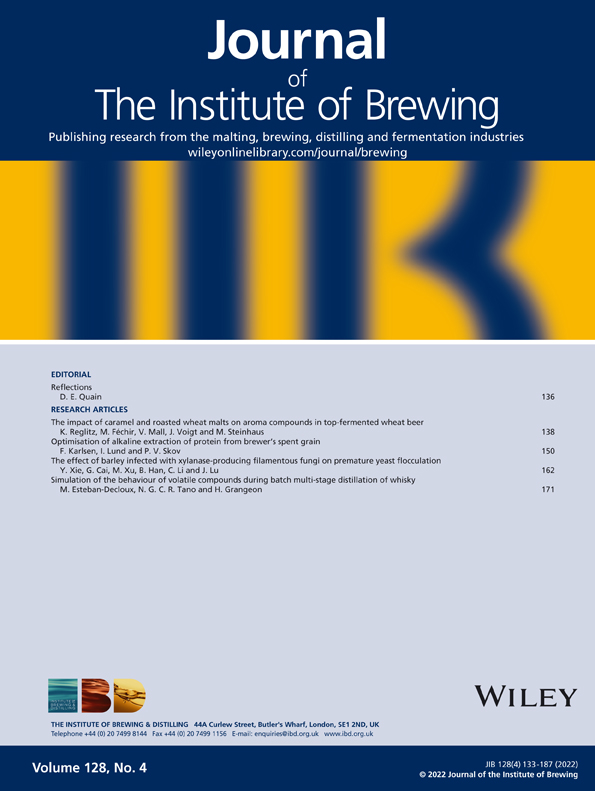THE IN VIVO AND IN VITRO DEGRADATION OF BARLEY AND MALT STARCH GRANULES
Abstract
The susceptibilities to amylolytic hydrolysis of the two different types of starch granule in barley and malt have been investigated. The large and small granules from both germinated and ungerminated grain were subjected to the sole action of malt α-amylase under conditions which otherwise simulated those of a conventional infusion mash. Large starch granules from barley are hydrolysed at a slower rate than those from malt. The faster conversion of the latter is attributed to prior modification of the starch granule structure during germination. The small granules from barley are extremely resistant to attack by α-amylase and even pre-cooking does not appreciably increase their susceptibility to amylase attack. Although the small starch granules from malt are less susceptible than the corresponding large granule fraction, they can be hydrolysed to a greater extent than can the small granules from barley. The increased susceptibility of small granules from malt is probably due to the partial removal of their protecting surface layer of protein. Although during malting the small granules of barley are hydrolysed more rapidly than the large granules, the situation is reversed during mashing. Very little loss of extract can be attributed to the enzymic resistance of small starch granules in all-malt mashes. If raw barley is used in the grist, substantial amounts of small starch granules may remain in the mash.




